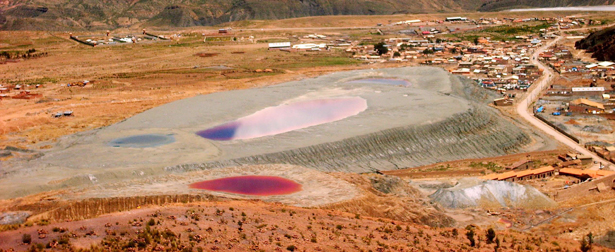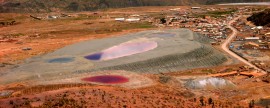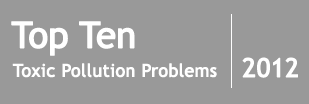Source #3
Mining & Ore Processing
Description
Mining and ore processing is an essential industry that supplies the minerals, metals and gems needed to produce a wide variety of products and materials. Metals are mined for use in a vast array of products with many essential uses. . For example, lead is used for batteries and electrical equipment, communication and transportation units. While copper is used for electronics and construction and iron is used as a base for steel and automotive products. Gold and silver are used for jewelry.[1] Mining is the process of removing ore, minerals, metals and gems from the earth. Mining is done through surface or open-pit mining, underground mining or through fluid mining. Open surface mining entails digging out or blasting rocks and creating open-pits in the earth, exposing mineral veins. This is the most common method for iron, aluminum, copper, gold and silver mining. As upper-level ore deposits are taken away, blasting is done deeper and deeper into the earth to reach lower deposits.

Underground mining entails cutting shafts into the earth and putting workers underground to excavate ore. Lead, antimony, chromium and zinc are obtained this way and often, coal, gold, silver and other metals.[2] The invention of new technologies, equipment and cheap energy has made surface mining the prevalent mining method for most substances now, except where ore veins are located far below the surface.[3]
Mined ore is removed from the earth and typically trucked to ore concentrating facilities, where it is crushed, washed and separated to obtain the minerals in the ore. For ores with a low concentration of the desired mineral, initial ore concentration is often done at or near the mine due to the volume of ore to be processed and the resulting cost of transport. After concentrating the ore, the metal or mineral is sent for more processing, smelting, refining or some other type of finishing. These processes require a diverse and varied amount of chemicals. The waste from concentrators is called tailings, and typically wet, contaminated with chemicals and/or metals and large in volume.
The mining and minerals processing industry have taken considerable steps to monitor, control and safely manage the use of chemicals necessary to the production processes and manage tailings in environmentally safe ways. However, in less technologically advanced or older plants, some of the minerals mined, tailings and the toxic chemicals used are released into the environment. Due to their hazardous constituents, they negatively impact human health. In addition, the problem of abandoned mines and legacy pollution is widespread.
In the Blacksmith Institute’s database there are more than 350 sites polluted from mining and ore processing, potentially putting more than 6.7 million people at risk. Geographically the sites are located in most continents and in almost 50 countries. Africa, Eastern Europe and Southeast Asia are the regions most represented in the database, but certainly toxic pollution from mining and ore processing affects all regions of the world.
Exposure Pathways
Waste products are the main source of pollution from both currently operating mines and legacy pollution sites. Mines can produce a range of waste quantities. Waste can account for almost 10 percent of the total material mined to well over 99.99 percent, depending on the processes and substance being mined.[4] Waste products include wastewater, waste rock (containing metals and ore), tailings, process solutions and processed ore. The waste contains many of the chemicals used in the process, including chlorides, sulfur compounds, hydrochloric or sulfuric acids and lime, soda ash, and cyanide compounds. At abandoned or poorly closed mining sites, mine tailings and improperly stored waste can pollute groundwater, surface water, and agricultural activities. In operating mining and ore processing plants that are poorly managed, untreated waste water, slag and solid waste are often directly dumped into surface waters or piled up, uncovered, near the mine. Metals from the ore may be washed away along with soil, causing heavy erosion problems and contaminated runoff. The population surrounding the site then comes into contact with these pollutants through inhalation of contaminated dust and soil, ingestion of contaminated water and food and dermal contact with contaminated water.
Top Pollutant(s)
The most hazardous pollutants at mining and ore processing sites investigated by Blacksmith are lead, chromium, asbestos, arsenic, cadmium and mercury. This reflects the emphasis in the database on abandoned sites and small-scale mining activities. However, pollutants found at mining sites are many and varied and could include radionuclides, cyanide, and other heavy metals. Lead and chromium are the top pollutants by DALYs and mercury is the top pollutant by number of population put at risk. Asbestos is particularly toxic and has a high DALY impact, but there is only a small number of asbestos mining sites in the Blacksmith database.
Global Burden of Disease
Blacksmith Institute estimates that the health of nearly 14 million people is at risk from mining and ore processing locations in the countries in which Blacksmith has done investigations. These exposures result in approximately 2.5 million DALYs. It should be noted that the contribution of mercury and cadmium to this DALY calculation was miniscule. Limitations with the existing methodology inhibited the inclusion of the key health outcomes associated with these contaminants. Thus the resulting analysis relies almost entirely on health outcomes associated with lead and chromium. The actual DALY impact of this industry is likely much larger.
What is being done?
Well planned and managed mining operations, including rehabilitation following closely behind ore removal, can minimize problems at large-scale mines. The Strategic Approach to International Chemicals Management (SAICM) is a policy framework that was adopted in 2006 at the International Conference on Chemicals Management to ensure that by 2020 all chemicals are “produced and used in ways that minimize significant adverse impacts on the environment and human health.”[5] The mining industry has engaged with SAICM and is tracking progress and achievements through the Minerals and Metals Management 2020 action plan. In September 2012 the International Council on Mining and Metals (ICMM), a trade group bringing together 22 mining and metals companies and 34 mining associations, published a report detailing the progress of the industry around the SAICM objectives of risk reduction, governance, capacity building and technical assistance and knowledge and information. In addition, the ICMM has implemented the Sustainable Development Framework, which all members are required to implement in their operations; the ICMM monitors progress annually and members publicly report on it.[6]
Blacksmith has worked on remediating contaminated surface waters used for drinking that was polluted by mining activities. When remediating pollutants in surface water, water treatment at the point of consumption can sometimes be a viable approach. The town of Mailuu-Suu, Kyrgyzstan, was the site of intensive Soviet uranium mining and processing between 1946 and 1968. What remains today are two million cubic meters of radioactive mining waste piled in open valleys along the Mailuu-Suu River. The town draws its drinking water from the river, and levels of heavy metals and radionuclides in the water present a health risk to the community. In 2008, Blacksmith Institute, with the support of Green Cross Switzerland, initiated a project to install water filters in local schools and hospitals. In 2012, Blacksmith and Green Cross reinvested in the community by replacing filter cartridges, installing additional filters in kindergartens, conducting a health monitoring program, and implementing a community education program to raise awareness and teach methods to mitigate risks.
Footnotes:
[1] "Profile of the Metal Mining Industry." U.S. Environmental Protection Agency. Washington, DC. 1995. http://www.epa.gov/oecaerth/resources/publications/assistance/sectors/notebooks/metminsn.pdf
[2] Ibid.
[3] Ibid.
[4] "Profile of the Metal Mining Industry." U.S. Environmental Protection Agency. Washington, DC. 1995. http://www.epa.gov/oecaerth/resources/publications/assistance/sectors/notebooks/metminsn.pdf
[5] http://www.saicm.org/
[6] "Sustainable Development Framework." International Council on Mining & Metals. Available at: http://www.icmm.com/our-work/sustainable-development-framework

-
Source #1
Battery Recycling
-
Source #2
Lead Smelting
-
Source #3
Mining and Ore Processing
-
Source #4
Tanneries
-
Source #5
Industrial/Municipal Dumpsites
-
Source #6
Industrial Estates
-
Source #7
Artisanal Gold Mining
-
Source #8
Product Manufacturing
-
Source #9
Chemical Manufacturing
-
Source #10
Dye Industry
-
The Remaining Five Sources



